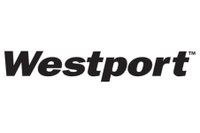EV Infrastructure in the US the Next Challenge for a Growing Industry

Read on to learn more about what experts had to say about building infrastructure for electric vehicles in the US.
As governments set targets to fight climate change by reducing carbon emissions, developments in the electrification of transportation continue to take place around the world.
That’s why it comes as no surprise that US President Joe Biden’s goals include steps to accelerate and deploy electric vehicles (EVs) and charging stations, shifting priorities from the previous administration.
For investors interested in the EV space, keeping an eye on developments on the infrastructure front is key. Read on to learn more about what analysts think about this space.
Today’s EV and EV infrastructure capacity in the US
EVs have become mainstream in the past year, with the US making moves to stop lagging behind not only China, but also Europe ― which became the fastest-growing EV sales region in 2020.
Speaking about the EV market in North America, Simon Schnurrer, partner and automotive expert at Oliver Wyman, told the Investing News Network (INN) that regulation, incentives and the push for electric mobility in the US have been somewhat slower compared to Europe.
“That makes a big difference, (but) the US OEMs are catching up quite quickly at the moment,” he said. “As of today, and I think even into the next year, we’ll see slower market growth and smaller market share of battery electric vehicles (BEVs) in the US compared to Europe.”
But for the expert, there’s no natural reason why the US should be lagging behind.
“It will be a question on attractive products. Attractive in all dimensions — price, but also performance and emotions,” he said.
However, one area of concern for Schnurrer is the recharging situation in the US, as the grid is not “terribly good” in all areas of the country.
“This will be an issue too, because the energy is there, but it’s not exactly in the place you need it to be in order to recharge all these vehicles. So it will need some time and considerable investment. It’s not a question about power plants, or if you have the energy, it is a question of distribution of the energy.”
Currently, there are around 42,500 public EV charging stations and 103,000 charging outlets in the US, according to Rho Motion. This is split into level 2 (38,500 stations and 85,000 outlets) and DC fast charging (5,000 stations and 18,500 outlets).
“However, around one third of this is in California as the state is far ahead than any other state in terms of EV adoption and emissions standards,” Charles Lester, senior analyst at Rho Motion, told INN.
In 2030, Rho Motion expects around 21 million to 22 million EVs to be on the road in the US. Alongside this, the firm expects around 1.1 million public EV chargers to be required to meet charging demand.
“Over time, we expect the number of DC chargers will have to increase to meet the demand of public fast charging, with the current ratio of one DC fast charger per 63 BEVs decreasing overtime,” Lester said.
EV infrastructure outlook in the US
Released in March 2021, the Biden administration’s infrastructure plan outlines US$2 trillion in spending.
“The plan stated it would invest US$174 billion to ‘win the EV market,’ although full details on how and where this investment will be targeted are still coming through,” Lester said.
Biden plans to put in around 500,000 public EV charging stations in the US by 2030, with “at least” US$15 billion of the EV funding.
“Through a combination of grant and incentive programs for state and local governments and the private sector, it will support a transformational acceleration in deployment of a mix of chargers in apartment buildings, in public parking, throughout communities, and as a robust fast charging along our nation’s roadways,” a White House statement reads.
The money will be distributed through both states and the private sector. This also includes US$34 million for reaching funding into EV charging development.
“A lot of EV charging will still take place at home, and lots of states have local subsidies for home charging,” Lester explained. “The US federal tax credit gives businesses 30 percent off of the total cost of purchasing and installing EV charging stations, to be installed by December 31, 2021, with a maximum credit of US$30,000.”
Looking at the current EV infrastructure in China, which has been leading the EV space, the country has one charging point for every five EVs, compared with 20 in the US, according to BloombergNEF.
In fact, China had over 800,000 EV charging outlets available for public use installed at the end of 2020, up from 516,000 in 2019 and 300,000 in 2018. In December 2020 alone, China installed 112,000 public charging points — more than the entire US public charging network.
When asked about what the US could learn from China in terms of scaling up EV infrastructure, Lester pointed out that the Asian country is a very different country for public EV charging.
In China, there is higher demand for public EV infrastructure as there are a lot of people living in densely populated areas, such as Beijing and Shanghai. As a result, there is little access to private charging, as a lot of the population lives in apartments.
“This results in a higher proportion of public EV chargers required per EV in China,” Lester said. “Opposingly, the US is typically less population dense, and a lot of regions will have a higher access to private charging, reducing the demand for public charging.”
A good point of comparison, Lester added, is the number of DC fast chargers versus the number of BEVs on the road. As mentioned above, as of April 2021, in the US and Canada there was one DC fast charger per 63 BEVs. In China, there is currently one DC fast charger per 11 BEVs.
Challenges ahead
In 2020, the number of DC chargers in the US represented 18 percent of total chargers. By April 2021, this decreased to around 15 percent, highlighting that the rate of growth for slower chargers (level 2) outpaced fast charger growth in the opening four months of the year.
“The rate of fast charging will need to grow over the next few years to meet demand, especially when the US government officially introduces its new incentive scheme for EVs,” Lester said. “There will also be greater demand for public EV charging as larger vehicles with big batteries are sold in the US.”
Scaling up infrastructure to meet the upcoming demand won’t happen without hurdles, including cost.
“A DC fast charger can cost US$100,000+ (including hardware and installation),” Lester said. “The cross between public and private investment will be a challenge, as there may be a lack of economic opportunity for the fast rollout of EV chargers with private investment.”
The type of chargers, for example installing 350kW chargers, could also become a challenge.
“Current EVs cannot charge at this speed, but over time, as batteries develop, EVs will be able to charge at a faster speed,” Lester said, adding that power demand on EV infrastructure could also be challenging, lending itself to energy storage capabilities.
Don’t forget to follow us @INN_Technology for real-time news updates!
Securities Disclosure: I, Priscila Barrera, hold no direct investment interest in any company mentioned in this article.
Editorial Disclosure: The Investing News Network does not guarantee the accuracy or thoroughness of the information reported in the interviews it conducts. The opinions expressed in these interviews do not reflect the opinions of the Investing News Network and do not constitute investment advice. All readers are encouraged to perform their own due diligence.




